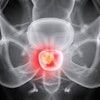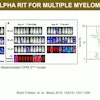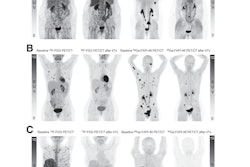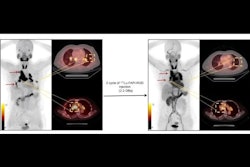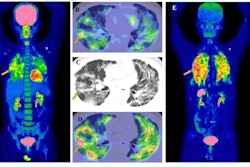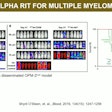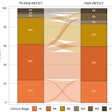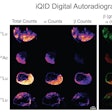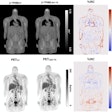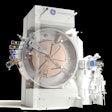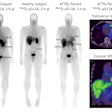A PET-based scout dosimetry protocol can be feasible in treating lesions with yttrium-90 (Y-90) fibroblast activation protein inhibitor (FAPI) radioligand therapy, according to research presented June 11 at the Society of Nuclear Medicine and Molecular Imaging (SNMMI) annual meeting.
In his presentation, Pedro Fragoso Costa, MD, from University Hospital Essen in Germany described the protocol and its performance in an early-phase study, showing how the protocol allows for multiple treatment cycles due to lower radiation doses.
“In terms of safety, we see that due to the very fast clearance and relatively low dose . . . in the general sense, [the results give] us the idea that this is a safe procedure,” Costa said.
Costa and colleagues in a previous study found that radioligand therapy with Y-90-labeled inhibitors of FAPI was tied to promising tumor control in patients with sarcoma. The team’s protocol consists of a first-cycle administration of 3.7 GBq of Y-90Y FAPI-46 performed and adjusted in possible subsequent cycles.
For the study presented at SNMMI, the team’s research focused on absorbed dose calculations for lesions and organs at risk in patients receiving the first cycle of Y-90 FAPI-46 radioligand therapy.
The study included 17 patients who underwent three PET/CT scans of the kidneys and areas where tumors manifest. The patients were intravenously administered an average dose of 5.7 GBq. The researchers also derived lesion and kidney uptakes from PET/CT scans taken one, four, and 20 hours postinjection, respectively.
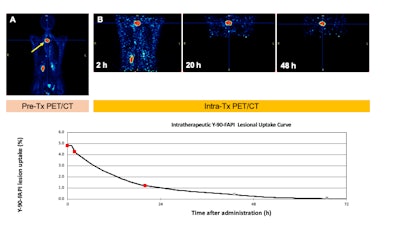 Lesion uptake from a patient with a solitary fibrous tumor and its FAP expression on gallium-68 (GA-68)-FAPI-46 (A) and intratherpeutic Y-90-FAPI-46 (B). The panel shows the constructed time activity curve with the three PET/CT measurements.SNMMI
Lesion uptake from a patient with a solitary fibrous tumor and its FAP expression on gallium-68 (GA-68)-FAPI-46 (A) and intratherpeutic Y-90-FAPI-46 (B). The panel shows the constructed time activity curve with the three PET/CT measurements.SNMMI
Of the total patients, 15 had sarcoma, one had prostate cancer, and one had gastric cancer. The study analyzed 31 primary and metastatic lesions located in the following areas: lung, pancreas, pleura, liver, thyroid, bone, and lymph nodes.
Costa reported that the average absorbed dose coefficient was 3.07 Gy/GBq, 0.38 Gy/GBq, and 0.04 Gy/GBq for the lesions, kidneys, and bone marrow. He also said the effective half-lives were 8.3 hours and 11.9 hours for lesions and kidneys.
Finally, the team found that bone marrow kinetics were characterized by a “very fast” initial decay of 0.4 hours followed by a dominant phase with an effective half-life of 7.5 hours.
Based on these findings, the dosage received by organs at risk allows for multiple cycles of 90Y-FAPI treatment. He added that the scout activity evaluation provides valuable dosimetry data for further cycles, Costa noted.
“Y-90 FAPI-46 shows to be promising, but further evaluation with different radionuclides and further FAP-radioligands with improved bioavailability is needed for a clear description of the different therapeutic modalities,” he said.
He added that future developments include determining the prospective dosimetry based on diagnostic agents, which could give researchers “a huge advantage” in choosing the most appropriate radionuclides for therapeutic approaches. Costa also said that developing radionuclides with longer residence times in tumor tissues could help with this, but more knowledge is needed in the biological mechanisms of cancer-associated fibroblasts and microenvironment irradiation.
